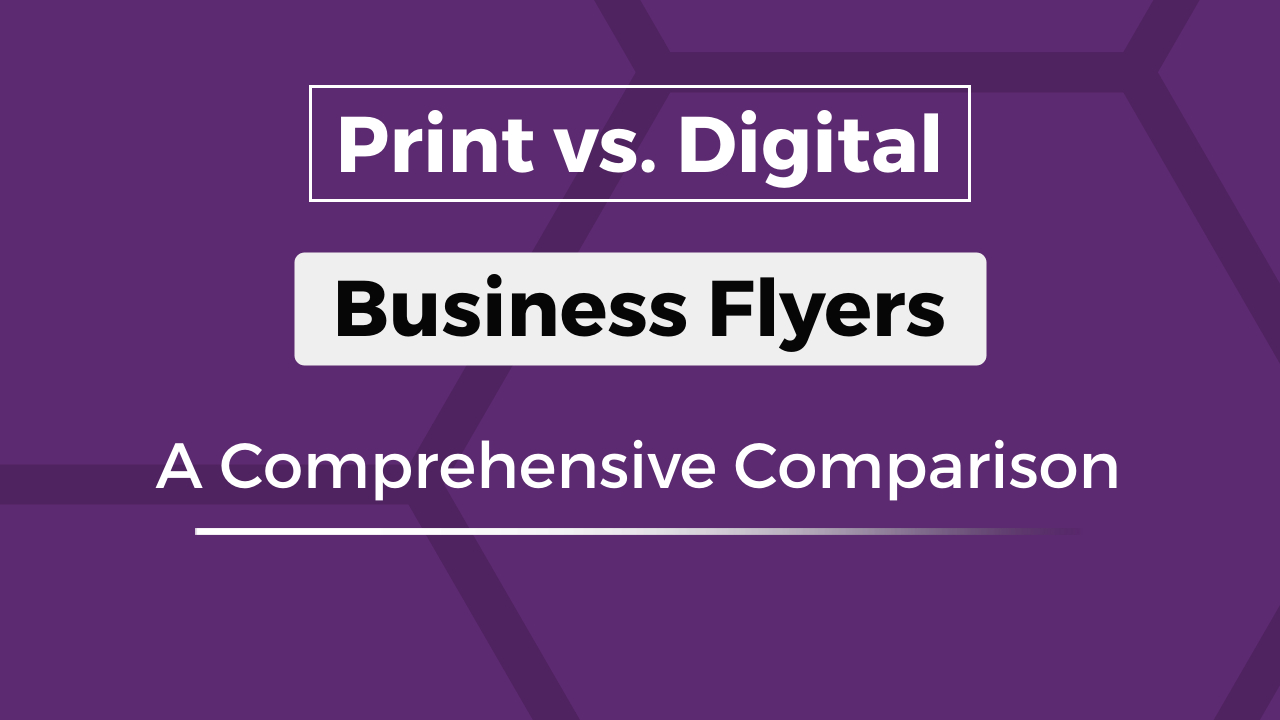In the ever-evolving landscape of business marketing, the choice between print and digital mediums has become increasingly important. When it comes to promoting your business effectively, one of the key decisions you’ll need to make is how to design and distribute your marketing materials, particularly flyers. These small, yet impactful, pieces of advertising can play a crucial role in your marketing strategy. Among the essential tools at their disposal are business flyer templates, which offer a foundation for crafting compelling business flyers.
In this article, we will undertake a comprehensive comparison of print and digital business flyers, exploring the pros and cons of each medium to help you make an informed decision.
Print Business Flyers: The Time-Tested Tradition
Pros of Print Flyers
1. Tangible Appeal
Print flyers have a physical presence that digital counterparts lack. Holding a well-designed print flyer can evoke a sense of authenticity and trustworthiness, making it more likely to leave a lasting impression on your audience.
2. Targeted Distribution
With print flyers, you can strategically distribute them to specific locations, events, or demographics. This targeted approach allows you to reach the right people in the right place, increasing your chances of conversion.
3. Less Digital Saturation
In today’s digital age, our screens are bombarded with advertisements. Print flyers offer a respite from the digital clutter, providing a unique opportunity to stand out and capture your audience’s undivided attention.
4. Versatility in Design
Print flyers allow for creative freedom in design. You can experiment with various paper textures, colors, and finishes to create a visually appealing and memorable piece that represents your brand effectively.
Cons of Print Flyers
1. Costly Production
Printing quality flyers can be expensive, especially when considering design, printing, and distribution costs. This may not be feasible for businesses operating on a tight budget.
2. Limited Interactivity
Print flyers lack interactive elements that digital media can offer. You cannot embed videos, links, or interactive forms, limiting the depth of engagement with your audience.
3. Tracking Challenges
Measuring the effectiveness of print flyers is more challenging compared to digital marketing. It’s harder to track conversions, click-through rates, and other essential metrics accurately.
Digital Business Flyers: The Power of the Virtual Realm
Pros of Digital Flyers
1. Cost-Effective
Digital flyers are budget-friendly. You can create, distribute, and share them online at a fraction of the cost of print materials, making them an excellent choice for small businesses and startups.
2. Instant Accessibility
With digital flyers, your audience can access your content instantly from anywhere in the world. This convenience increases the likelihood of immediate engagement.
3. Rich Media Integration
Digital flyers allow you to incorporate multimedia elements like videos, animations, and hyperlinks. This interactivity can boost user engagement and drive traffic to your website or landing page.
4. Real-Time Analytics
One of the standout advantages of digital flyers is the ability to track real-time analytics. You can measure user engagement, conversion rates, and other valuable data to refine your marketing strategy.
Cons of Digital Flyers
1. Digital Saturation
The digital landscape is crowded with advertisements, emails, and social media content. This saturation can make it challenging for your digital flyer to stand out among the noise.
2. Short Attention Spans
Online users often have short attention spans. Ensuring that your digital flyer captures and holds their attention is crucial for success.
3. Potential Technical Issues
Technical glitches or compatibility issues can hinder the user experience when viewing digital flyers. It’s essential to optimize your content for various devices and platforms.
Making the Right Choice
In the ongoing battle between print and digital business flyers, there is no one-size-fits-all answer. The choice between the two depends on your specific marketing goals, target audience, and budget constraints. Both mediums offer unique advantages and drawbacks, so consider the following factors when making your decision:
- Audience: Who is your target audience, and where do they spend their time? Are they more receptive to physical materials or digital content?
- Budget: Assess your budget and determine whether print or digital flyers align with your financial resources.
- Goals: What are your campaign objectives? Are you aiming for immediate conversions, brand awareness, or long-term engagement?
- Interactivity: Consider the level of interactivity your campaign requires. Do you need multimedia elements, or will a traditional approach suffice?
Ultimately, the effectiveness of your marketing campaign lies in your ability to leverage the strengths of both print and digital flyers. Integrating them into a cohesive strategy can yield the best results, ensuring that you reach a broader and more diverse audience.
Conclusion
In conclusion, the decision between print and digital flyers should not be seen as an either-or choice. Instead, view them as complementary tools in your marketing toolbox, each offering distinct advantages. By carefully assessing your goals, audience, and resources, you can tailor your approach to maximize the impact of your marketing efforts.



